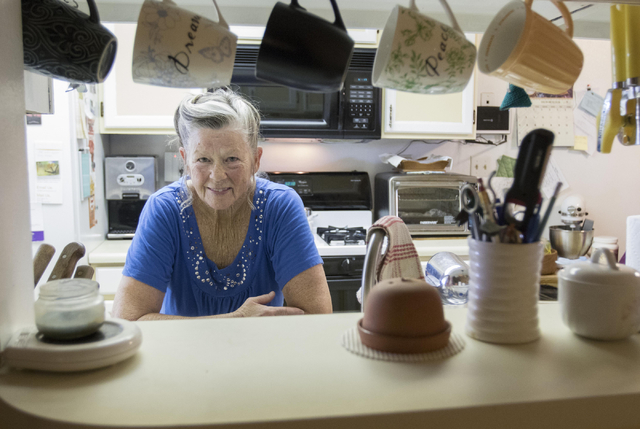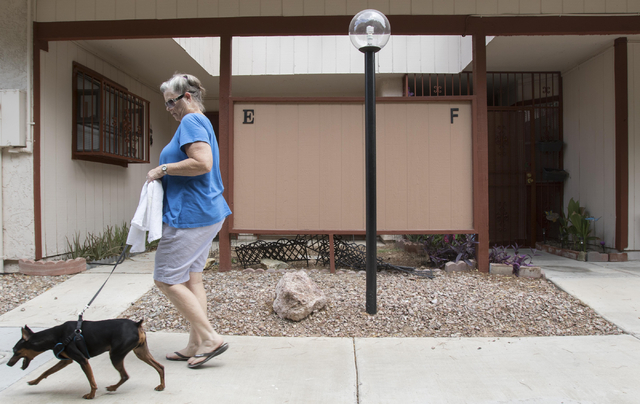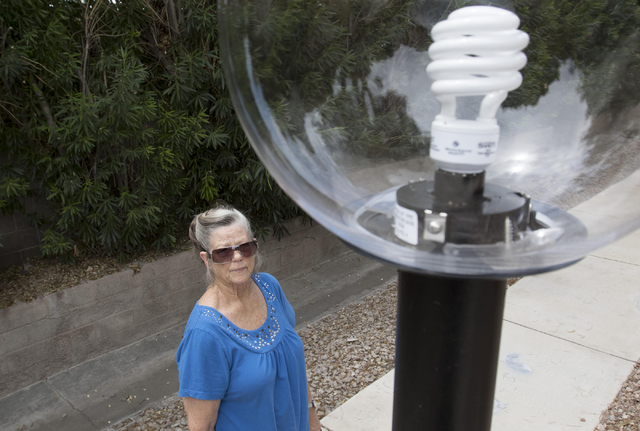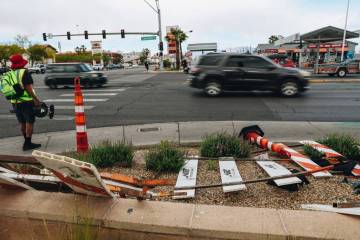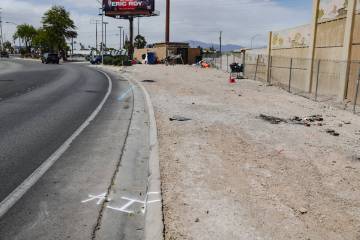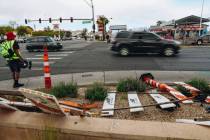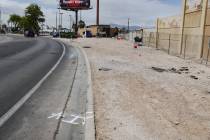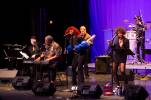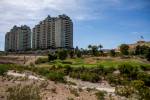City grants help associations improve neighborhoods in Las Vegas
Tori Bridges-Hudson recalls a time several years ago when prostitutes, pimps, drug deals and break-ins to vacant units were common happenings in her Las Vegas neighborhood.
With several safety and cleanup projects funded partly by city grants, and a more active homeowners association board, vacant units have filled in, and the Crossroads 1 development is well-lit after dark and its residents feel more secure.
“We couldn’t have done it without grants, the police and people coming together to work to make our community safer,” Bridges-Hudson said of her eastern Las Vegas development. “It just gives you a sense of pride. You can walk outside at 1 a.m., if your dog needs to go out, and not feel afraid.”
The homeowners’ association four or five years ago began to get more active and started applying for grants, including from the city’s Neighborhood Partners Fund.
In the past few years, the association has received small city grants that it has matched and has used that money to install security cameras the first year, then LED lighting that “makes it look like daylight,” said Bridges-Hudson, who has been involved in the grant applications in past years.
This year, the association received a $1,500 through the Neighborhood Partners Fund program to rebuild and expand its clubhouse for community events. The association is putting another $20,780 into the project. A cramped room with mold creeping across the bottom of one of the walls currently serves as the meeting space. The new project will transform a room that previously housed a hot tub into a more versatile gathering space.
The grants have given residents the motivation to tackle more projects, said Jack Brown, who serves on the HOA board.
“It does provide a direction,” Brown said.
The Neighborhood Partners Fund was conceived in 1998 and has since put $1.1 million of city funds into dozens of neighborhood projects all over Las Vegas, which range from safety upgrades to beautification to cultural and educational endeavors.
In the 18 years the program has existed, with the matching requirement, another $2.9 million on top of the city grants has been invested in community projects, through dollar matches, in-kind donations, volunteer labor and business sponsorships.
This year, $55,000 was distributed among 25 neighborhood groups and homeowners associations, and the total match for those projects is more than $290,000. Lighting upgrades appeared to be the most common project that received funding this year, but other groups proposed beautification and entryway upgrades. The Five Points Business Association proposed a mural at Hollingsworth Elementary School.
A 13-member board with two representatives from each ward and a mayoral appointee vets the applications from the neighborhood groups, poring over their proposals and listening to presentations, before deciding how to award the funds.
The City Council approved the awards last month, which ranged from $1,000 to $5,000. The annual city grants, which are drawn from the general fund, act as a “stimulus” in a way, said NPF Program Administrator Maria Castillo-Couch, who works in the city’s Office of Community Services.
“The goal has been to generate community spirit and have neighbors talk to neighbors,” Castillo-Couch said. “And that’s what we’ve seen happen.”
During its first year, 1998-99, the fund doled out $50,000 in grants, which was increased to an annual $75,000 allocation the following year. The funds fell to $55,000 in 2008-09 because of the economic downturn, which is where it’s stayed since.
This year, applications from 27 different neighborhood groups came in. One dropped out of the process, and another didn’t qualify. The remaining 25 were all awarded funds, though nearly all received less than they requested.
Last year, 17 applications were approved, Castillo-Couch said.
At Crossroads 1, the grants and the work on projects “helped put life in a neighborhood that was dying,” Bridges-Hudson said.
Bridges-Hudson walks through the 128-unit development often, picking up plastic bags and garbage out of bushes.
“We would have done it, but it would have taken us much longer,” she said. “Now it’s becoming a better environment and place to live.”
Contact Jamie Munks at jmunks@reviewjournal.com or 702-383-0340. Follow @JamieMunksRJ on Twitter.



